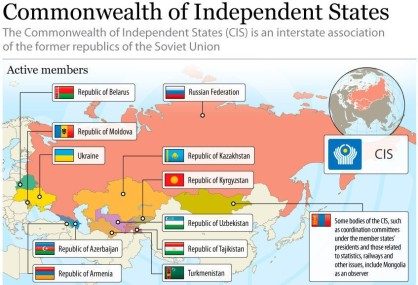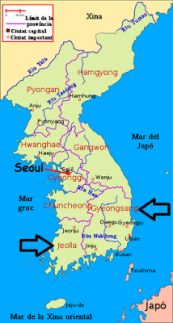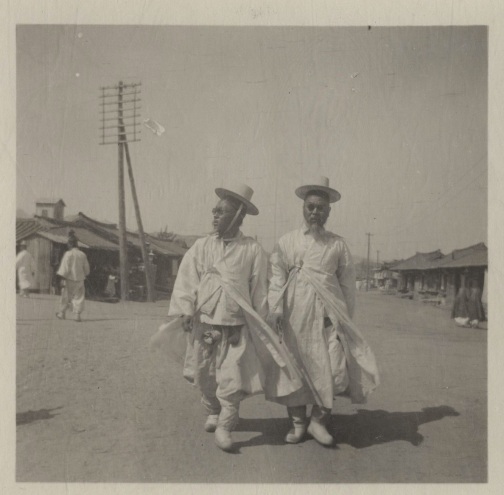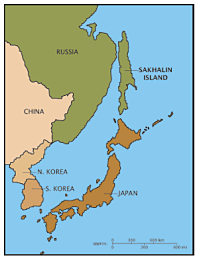The Korean Diaspora: Russian Koreans ( Koryo Saram )
Let’s get started, today we’ll talk about one of the most oldest diasporas in Korea. They even have an in-depth documentary titled the The Unreliable People if you’re interested in learning more about their culture and history.
First thing is, there are two types of categories for Koreans who’ve made Russia their home.
And when I say Russia, I actually mean the Commonwealth of Independent States (CIS).

Anyway, one type of Koreans refers to themselves as Sakhalin Koreans;they live on an island called Sakhalin just off the coast of Russia.
They DO NOT LIKED to be called Koryo-saram, someone who resides in the post-Soviet states, aka the independent states of Central Asia, or as I mentioned before, CIS.
I would imagine that it would be like how Americans don’t like to be called Canadian and vice-versa.
When I was asked if I was Canadian for the first time while in South Korea,
I kind of died a little inside.
Well, not really, but it’s like when someone guesses something about you,
and it’s totally wrong. O.O

Anyway, the Sakhalin Koreans are originally from Gyeongsang and Jeolla. (map on right)
But why even move in the first place ?
Well, they didn’t move by choice. During World War II, the Japanese government forced them to work in the coal mines in Sakhalin.
*Sigh* Ah Japan, I love you, but why so cruel to our people ?
Moving on. In the 19th century, many Koreans had to leave the country because they were poor peasants and could not survive in their current environment.
Only a small handful were of the wealthy elite and owned the farmlands. This was during the Joseon Dynasty of Korea.

Many moved for a better life, and did they move ! The first Koreans to migrate to the Russian Empire included 761 families, equating to 5,310 people. Then, many sought for an even better life in Siberia.
Good Ol’ Siberia. Everything was going so well. Until the Russo-Japanese War in 1907. Under the authority of Japan, Russia set an anti-Korean law. A lot of lands were taken away and Korean laborers were laid off.
So what now ? Well, Koreans just said f*ck this sh*t, and the migration into Russia kept growing.

The Bolshevik Revolution? “F*ck that too,” they said (at least, this what I would’ve said), and more people kept coming.
Eventually, the population grew to about 106,817 by 1923. The government tried to slow down the movement but it didn’t really stop the Koreans. They just kept on coming. The only thing that occurred was that Koreans had to naturalise as Soviet citizens. Otherwise, the Soviets didn’t really do much.
The other minor setback was when the Japanese used Korean spies to infiltrate Russia.
So a new Resolution was signed which meant Koreans could either cross the border into the Japanese-ruled Korea or exile to Central Asia. Considering how much history the Koreans had with the Japanese, they chose Central Asia.
When they got there, there was a problem, this area was a difficult place for Koryo-saram. Most of these families were not acclimatised in this dry region, and financial promises never occurred. So about 40,000 deported Koreans died between 1937 and 1938.
But things started to look up, though; the government finally provided assistance to them and in just a mere three years, they were on their feet again.
There is plenty historical documentation if you’re interested more in the Koryo-Saram. If you can speak Russian, there’s a website dedicated about them as well here.
In Korea and want to get involved ? This website’s dedicated to the Russian-Korean relationship as well, and they are very active on facebook as well.
—
All the facts I used were from wikipedia, so if you want a thorough history about Koryo-saram it’s all there; the culture, cuisine, language, and loads more were never mentioned in this post.
The point of this post today was to tip my hat to these guys. Any person who packs their bags and leaves their country has to have guts, real guts. It’s been a long road, and the road will still continue but now in a much lighter view.
If anyone is a Koryo-saram or a Sakhalin Korean, I’d love to hear your personal story.


I agree… any person who decides to leave his comfort zone really have a lot of guts to do so. But it’s not always easy and they have their own reasons for doing that but whatever it is I salute them.
LikeLike
*salute* ^_^
LikeLike
*bow*
LikeLike
Hi
I’m koryosaram.
Grew up in Kazakhstan, now live in Russia.
LikeLike
Hey Alexandr,
Thanks for sharing, I took a look at your website as well. I hope I did this article a bit of justice, though it was quite short. ^_^
Would you mind if I contact you for a future post ? I could include the kind of work you do and other things if you had them in mind.
Your Kyopo Friend,
Jenny
LikeLike
This is really interesting, Jenny. Thanks for posting!
LikeLike
Glad to enjoyed it Steph ^_^
Your Kyopo Friend,
Jenny
LikeLike
Hi, my name’s Andrey. I also was born and raised in former Soviet Republic of Uzbekistan. My grandparents were among the deported in 1938. Now we (the decendants) are scattered around the world with the majority being in Russia (I suppose). These days many go to South Korea for work. I’m in SK too..lol)
LikeLike
Hey Andrey,
First of all, thanks for taking the time to read my article.
I have met 3 people so far who were from Russia and Kazakstan. It is quite interesting how our diaspora is spread out, yet most people find themselves back in SK 🙂
Have you met many other Koryo sarams or Kyopos?
Your Kyopo friend
Jenny
LikeLike
Hello zergsprincess,
I read your articles coz they are just interesting. You are a good writer (or blogger^^).
Yes..the number of koreans from CIS in SK is increasing year on year. We are everywhere))). I work for a korean company and there are more than 10 kyopos from CIS. There are russian quarters (in Seoul, Busan, Ansan for example), churches that offer worship services in Russian, shops, restaurants, administration and travel agencies.
I’m looking forward to your next article^^
교포 Andy
LikeLike
Thanks Andy,
I hope to entertain you with more posts 🙂
When I was in Korea, I just really enjoyed being around Kyopos and meeting other Kyopos. It’s something that I’ve never experienced before, so I made this site to bring everyone together to one place. Or at least to learn about other Kyopos.
I visited a Russian restaurant because my friend was a Koryo saram, and that was really interesting !
I want to go there again when I go to Seoul this year. 🙂
This is really just a side note but with my site, I really want to have other people’s experiences and post articles about their lives. If you or any of your friends would be interested, feel free to shoot me an email at thekoreandiaspora@gmail.com
your 교포 friend,
Jenny ^^
LikeLike
Really informative and interesting! It’s always great to learn about the *real* history of *real* Koreans, which can sometimes get a little lost.
A(nother) great post 😀
LikeLike
Hey Underworld,
It’s interesting because there are limited pictures and I’ve had to dig through the net to find some ones that I thought were good. Glad you enjoyed it, it puts a smile on my face as well when others get a kick out of it too.
Thanks for stopping by, and see you soon 🙂
your Kyopo friend,
Jenny
LikeLike
Reblogged this on Keep on Geekin'.
LikeLike
Ah, I am currently living in Ulsan, but haven’t met any koryo saram, plenty of waygoogins here, though! I go to Seoul, regularly and would love to try the Russian restaurant you mentioned.. Do you have directions? My grandparents were Russian and so I have a mini connection there….!
LikeLike
If you ask around, they are there ^^
The place is called Kalinka.
As you know, directions to a place in Seoul can be quite confusing.. So my friend doesn’t even know the exact way to get, but here are a few links to help you navigate your way. In the second link, it says in Korean:
train number 5, exit 6 동대문 역사문회 공원역, it’s around there..
However, it’s a popular place and people in that area will be able to direct you as well ^^
links:
https://foursquare.com/v/kalinka/4f51e424e4b03be362470213
http://airair00.tistory.com/800 (go to the bottom and a map is there)
Also, I found another link that give you a handful of Russian restaurants in Seoul:
http://travel.cnn.com/seoul/eat/seouls-7-top-restaurants-featuring-cuisines-former-soviet-union-108146
Happy eating and let me know what they think ! It’s definitely authentic.
Jenny
LikeLike
[…] an insurance agency that offered both Russian and Korean services, and it made me wonder if any Koryo-sarams were inside! Could have just been a Russian agency that hired a few Koreans, but I didn’t […]
LikeLike